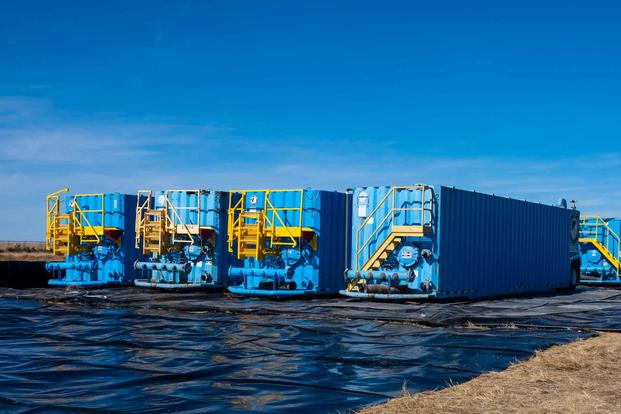
🇬🇧 Ongoing Investigation at Three Military Bases in the UK Over Alleged PFAS Contamination
An inquiry into possible chemical pollution is currently in progress at three military installations in the UK as concerns rise regarding the presence of hazardous ‘forever chemicals’ in surrounding waterways. The military bases being investigated — RAF Marham in Norfolk, RM Chivenor in Devon, and AAC Middle Wallop in Hampshire — have been pinpointed as likely sources of per- and polyfluoroalkyl substances (PFAS) contamination.
🧪 Understanding PFAS and Their Ecological Consequences
PFAS refer to a cluster of synthetic chemicals utilized in a wide array of industrial and consumer products, especially in firefighting foams that are extensively employed in military and aviation contexts. One specific compound, perfluorooctanesulfonic acid (PFOS), has been found in water sources at levels significantly above the safe threshold.
These substances are dubbed ‘forever chemicals’ because of their remarkable stability in the environment and human body. PFAS are resistant to degradation and may accumulate over time, potentially resulting in negative health effects such as liver harm, immune dysfunction, and various cancers.
Independent research and governmental analyses have increasingly identified military sites as major sources of environmental PFAS contamination, particularly in areas where aqueous film-forming foams (AFFFs) have been used historically.
🛡 Identification with New PFAS Assessment Tool
The military sites were flagged using a recently developed PFAS risk assessment tool from the Environment Agency (EA). This digital resource enables researchers and regulatory bodies to systematically identify and prioritize threats from PFAS pollution throughout England and Wales by examining historical and geographical data related to industrial and military operations.
Both RAF Marham and AAC Middle Wallop are located within designated zones for drinking water protection — regions crucial for safeguarding public water supplies. RM Chivenor sits at the border of protected shellfish waters and the River Taw, a waterway cherished for its biodiversity, notably its robust population of Atlantic salmon.
🧪 Case Study Evidence: Duxford Incident
The danger is not hypothetical. A prior investigation near Duxford airfield in Cambridgeshire revealed PFOS concentrations approaching 400 nanograms per litre — almost four times the upper limit of 100 ng/l established by the UK’s Drinking Water Inspectorate. This highlights the potentially significant environmental and public health ramifications for communities adjacent to military installations.
🏛 Government Reaction: Official PFAS Inquiry Initiated
In wake of rising anxiety, the UK Parliament’s Environmental Audit Committee (EAC) initiated a formal inquiry into PFAS pollution on 10 April 2025. The objective of the inquiry is to assess the UK’s existing regulatory frameworks and determine if current monitoring systems and research organizations are competent enough to detect and manage PFAS risks.
Essential questions posed by the inquiry include:
– Are guidelines regulating PFAS exposure sufficient to safeguard public health?
– How efficiently are agencies like the Environment Agency identifying and addressing contamination risks?
– What responsibility does the Ministry of Defence hold in funding remediation efforts?
🌍 Wider Consequences for Environmental Legislation
The commencement of this inquiry indicates a growing acknowledgment of PFAS as an immediate ecological threat. There is a developing international scientific agreement on treating PFAS chemicals with heightened caution. The European Union is pursuing bans on the majority of PFAS applications, with similar discussions occurring in the US and Australia.
In the UK, this inquiry could pave the way for more stringent environmental monitoring systems, tougher regulations on chemical use in military and industrial sectors, and possibly, clean-up efforts in affected areas.
📢 Local Communities and Environmental Organizations Demand Clarity
Residents and environmental advocacy groups have long urged for transparency and remediation. As investigations proceed at RAF Marham, RM Chivenor, and AAC Middle Wallop, the significant concern remains the safety of drinking water and the preservation of impacted ecosystems.
The inquiry’s findings, anticipated to be made public in late 2025 or early 2026, could influence future chemical safety standards and remediation efforts not only in military settings but across various sectors in the UK where PFAS chemicals are used or have been historically mishandled.
—
📌 Essential Information:
– PFAS = Per- and Polyfluoroalkyl Substances, resilient chemicals used in military firefighting foams
– Locations: RAF Marham (Norfolk), RM Chivenor (Devon), AAC Middle Wallop (Hampshire)
– Risks: Contaminated drinking water, habitat degradation, long-term health concerns
– Government Measures: Formal inquiry initiated into PFAS oversight and regulation
– Community Implications: Ongoing review of drinking water safety and environmental health
As the UK navigates the ramifications of PFAS, this inquiry could be a pivotal moment in the nation’s approach to one of the 21st century’s most pervasive environmental issues.